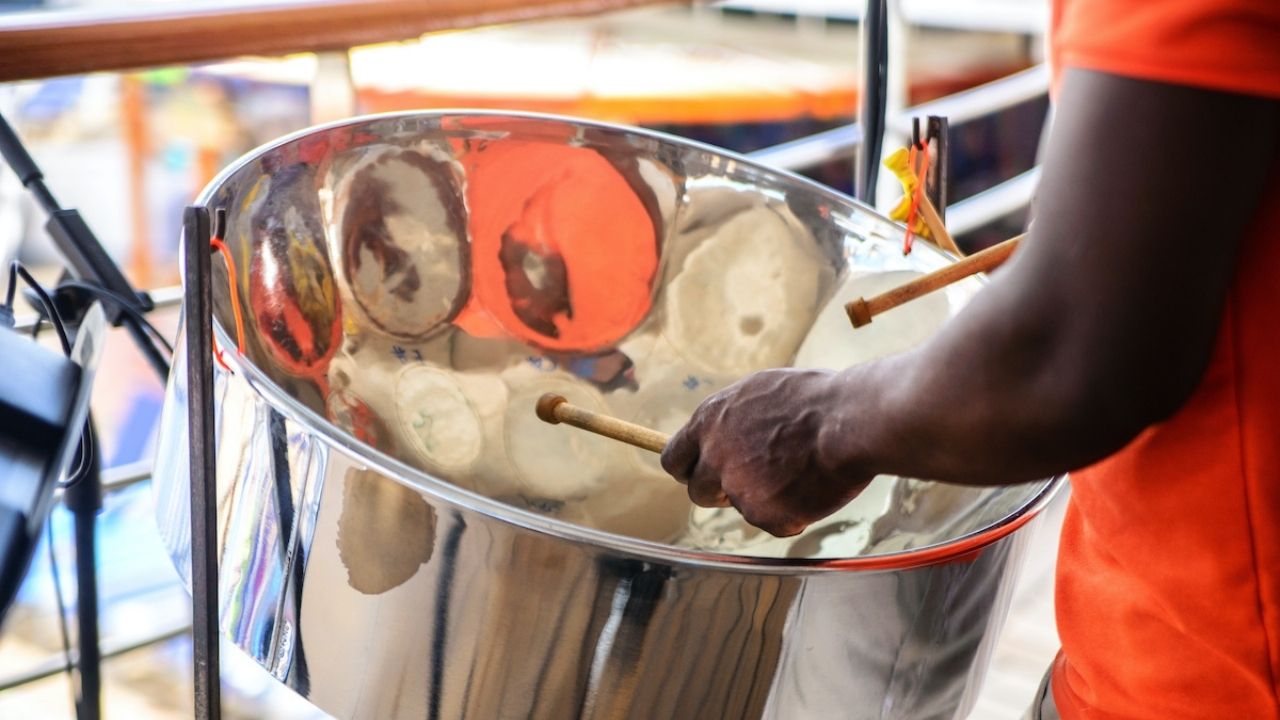
Calypso music is a vibrant genre originating from Trinidad and Tobago, known for its rhythmic beats and storytelling lyrics. This musical style has deep roots in African and Caribbean traditions, often addressing social and political issues with a touch of humor. Calypso gained international fame through artists like Harry Belafonte, whose song "Day-O (The Banana Boat Song)" became a global hit. The genre's infectious energy and cultural significance make it a beloved part of Caribbean heritage. Whether you're a music enthusiast or just curious, these 33 facts about Calypso music will give you a deeper appreciation for this captivating art form.
Key Takeaways:
- Calypso music originated in Trinidad and Tobago, blending African rhythms and social commentary. It continues to evolve, inspiring new genres and captivating audiences worldwide.
- Calypso music has a rich cultural impact, influencing literature, dance, and politics. Its vibrant history and storytelling lyrics make it a unique and influential genre.
What is Calypso Music?
Calypso music, originating from the Caribbean, is a vibrant genre known for its rhythmic beats and storytelling lyrics. This genre has a rich history and cultural significance, making it a fascinating subject to explore.
- Calypso music originated in Trinidad and Tobago in the early 20th century.
- The genre evolved from the African Kaiso music brought by enslaved Africans.
- Calypso is often performed with steelpan, a musical instrument made from oil drums.
- Lyrics in calypso songs often address social and political issues.
- The genre gained international fame in the 1950s, thanks to artists like Harry Belafonte.
- Calypso music played a significant role in the development of other Caribbean music genres, such as soca and reggae.
Influential Calypso Artists
Several artists have left an indelible mark on the calypso music scene. Their contributions have helped shape the genre and bring it to a global audience.
- Lord Kitchener, born Aldwyn Roberts, is one of the most famous calypso musicians.
- Mighty Sparrow, also known as Slinger Francisco, is another legendary calypso artist.
- Calypso Rose, born McCartha Lewis, is a pioneering female calypso singer.
- Harry Belafonte popularized calypso music in the United States with his hit song "Day-O (The Banana Boat Song)."
- David Rudder is known for his innovative approach to calypso music.
- Roaring Lion, born Rafael de Leon, was a prominent calypso artist in the 1930s and 1940s.
Cultural Impact of Calypso Music
Calypso music has had a profound impact on Caribbean culture and beyond. Its influence can be seen in various aspects of life and entertainment.
- Calypso music is a staple of Trinidad and Tobago's Carnival celebrations.
- The genre has influenced the development of Caribbean literature and poetry.
- Calypso music has been used as a tool for political activism and social commentary.
- The genre has inspired dance styles such as the limbo.
- Calypso music has been featured in numerous films and television shows.
- The genre has influenced other music styles, including jazz and hip-hop.
Calypso Music in Modern Times
Despite its roots in the early 20th century, calypso music continues to evolve and remain relevant in today's music scene.
- Soca music, a fusion of calypso and Indian rhythms, emerged in the 1970s.
- Modern calypso artists often incorporate elements of electronic music and hip-hop.
- The International Soca Monarch competition showcases the best calypso and soca artists.
- Calypso music is celebrated annually during the Trinidad and Tobago Carnival.
- The genre has a dedicated following in countries such as the United States, Canada, and the United Kingdom.
- Calypso music festivals are held worldwide, attracting fans from all over.
Fun Facts About Calypso Music
Calypso music is full of interesting tidbits and trivia that highlight its unique characteristics and history.
- The term "calypso" is believed to have originated from the African word "kaiso," meaning "bravo."
- Calypso songs are often characterized by their witty and humorous lyrics.
- The steelpan, a key instrument in calypso music, was invented in Trinidad and Tobago in the 1930s.
- Calypso music was initially performed in French Creole before transitioning to English.
- The genre has a tradition of "picong," a form of lyrical banter between performers.
- Calypso music has been used in educational programs to teach children about Caribbean culture.
- The genre has a strong tradition of storytelling, often recounting historical events and folklore.
- Calypso music has been recognized by UNESCO as an intangible cultural heritage.
- The genre continues to inspire new generations of musicians and fans worldwide.
Calypso's Lasting Impact
Calypso music isn't just catchy tunes; it's a rich cultural tapestry. Originating in Trinidad and Tobago, this genre has influenced global music scenes. Its roots in African and Caribbean traditions give it a unique sound that resonates with many. The genre's evolution, from early chantwells to modern-day soca, shows its adaptability and enduring appeal.
Artists like Harry Belafonte and Mighty Sparrow brought Calypso to international stages, making it a household name. The music's themes often tackle social issues, blending entertainment with powerful messages. This duality makes Calypso both enjoyable and thought-provoking.
Calypso's influence extends beyond music, impacting dance, fashion, and even language. Its rhythms and melodies continue to inspire new generations of musicians and fans alike. Whether you're a longtime fan or new to the genre, Calypso offers a vibrant, engaging experience that stands the test of time.
Frequently Asked Questions
Was this page helpful?
Our commitment to delivering trustworthy and engaging content is at the heart of what we do. Each fact on our site is contributed by real users like you, bringing a wealth of diverse insights and information. To ensure the highest standards of accuracy and reliability, our dedicated editors meticulously review each submission. This process guarantees that the facts we share are not only fascinating but also credible. Trust in our commitment to quality and authenticity as you explore and learn with us.
